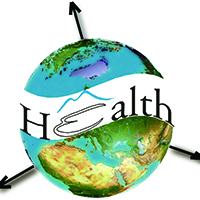Use of Twitter social media activity as a proxy for human mobility to predict the spatiotemporal spread of COVID-19 at global scale

Submitted: 3 April 2020
Accepted: 25 April 2020
Published: 15 June 2020
Accepted: 25 April 2020
Abstract Views: 18397
PDF: 2188
HTML: 34
HTML: 34
Publisher's note
All claims expressed in this article are solely those of the authors and do not necessarily represent those of their affiliated organizations, or those of the publisher, the editors and the reviewers. Any product that may be evaluated in this article or claim that may be made by its manufacturer is not guaranteed or endorsed by the publisher.
All claims expressed in this article are solely those of the authors and do not necessarily represent those of their affiliated organizations, or those of the publisher, the editors and the reviewers. Any product that may be evaluated in this article or claim that may be made by its manufacturer is not guaranteed or endorsed by the publisher.
Similar Articles
- Aleya Khalifa, Byoungjun Kim, Seann Regan, Tyrone Moline, Basile Chaix, Yen-Tyng Chen, John Schneider, Dustin T. Duncan, Examination of multidimensional geographic mobility and sexual behaviour among Black cisgender sexually minoritized men in Chicago , Geospatial Health: Vol. 19 No. 1 (2024)
- Samuel F. Atkinson, Abhishek K. Kala, Chetan Tiwari, Cascading effects of COVID-19 on population mobility and air quality: An exploration including place characteristics using geovisualization , Geospatial Health: Vol. 17 No. s1 (2022): Special issue on COVID-19
- I Gede Nyoman Mindra Jaya, Anna Chadidjah, Farah Kristiani, Gumgum Darmawan, Jane Christine Princidy, Does mobility restriction significantly control infectious disease transmission? Accounting for non-stationarity in the impact of COVID-19 based on Bayesian spatially varying coefficient models , Geospatial Health: Vol. 18 No. 1 (2023)
- Jerry Enoe , Michael Sutherland, Dexter Davis, Bheshem Ramlal, Charisse Griffith-Charles , Keston H. Bhola, Elsai Mati Asefa, A conceptional model integrating geographic information systems (GIS) and social media data for disease exposure assessment , Geospatial Health: Vol. 19 No. 1 (2024)
- Rita Roquette, Marco Painho, Baltazar Nunes, Spatial epidemiology of cancer: a review of data sources, methods and risk factors , Geospatial Health: Vol. 12 No. 1 (2017)
- Gonzalo Lòpez-Abente, Nuria Aragonés, Javier García-Pérez, Pablo Fernández- Navarro, Disease mapping and spatio-temporal analysis: importance of expected-case computation criteria , Geospatial Health: Vol. 9 No. 1 (2014)
- Paulina Pui Yun Wong, Chien-Tat Low, Poh-Chin Lai, The impact of geographic mobility on the spread of COVID-19 in Hong Kong , Geospatial Health: Vol. 17 No. s1 (2022): Special issue on COVID-19
- Diana Gomez-Barroso, Emilia Velasco, Carmen Varela, Inmaculada Leon, Rosa Cano, Spread of Ebola virus disease based on the density of roads in West Africa , Geospatial Health: Vol. 12 No. 2 (2017)
- Sungsoon Hwang, Kashica Webber-Ritchey, Elizabeth Moxley, Comparison of GPS imputation methods in environmental health research , Geospatial Health: Vol. 17 No. 2 (2022)
- Rubén Solano, Diana Gòmez-Barroso, Fernando Simòn, Sarah Lafuente, Pere Simòn, Cristina Rius, Pilar Gorrindo, Diana Toledo, Joan A. Caylá, Retrospective space-time cluster analysis of whooping cough re-emergence in Barcelona, Spain, 2000-2011 , Geospatial Health: Vol. 8 No. 2 (2014)
You may also start an advanced similarity search for this article.

 https://doi.org/10.4081/gh.2020.882
https://doi.org/10.4081/gh.2020.882







